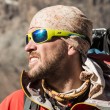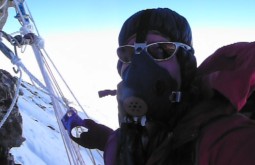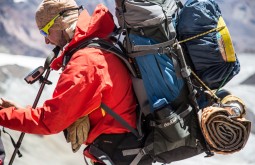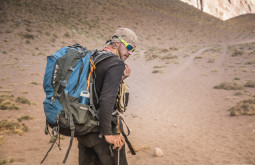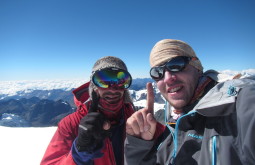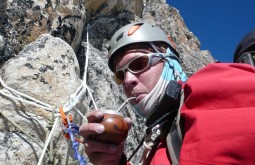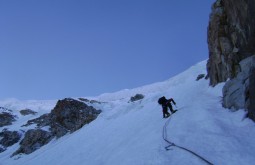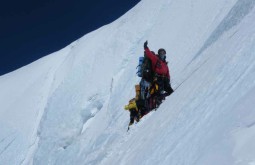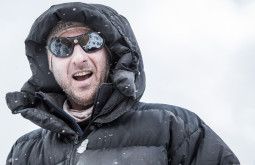Aconcagua + Ojos del Salado - 26 days
About
Aconcagua + Ojos del Salado - December until February- Date 2025: 03 Feb 2025 until 25 Feb 2025
If you have already climbed 6000 metre peaks and you are a committed person, this is the trip you are looking for!
How about climbing South America’s highest peak and the world’s highest volcano, in the same trip? You’ll basically climb Aconcagua by its normal route and normal speed. Then have a 2 day rest in Mendoza before heading to Ojos del Salado (6898m) for a rather quick ascent.
Neither Ojos or Aconcagua are technical mountains. Both of their summits can be reached by just walking. Ojos del Salado does have a tiny scramble at the end, but you should not worry about it. Aconcagua has no technical difficulties and you won’t use your hands at all to get to the summit.
Aconcagua or Ojos del Salado should not be underestimated though. Trying these summits without proper acclimatisation can be dangerous. Extreme altitude can cause serious or fatal altitude diseases. A good acclimatisation plan requires great planning, heavy logistics and time. This is where we come in.
Both of these mountains are VERY HIGH and this is what you should worry about. This is why we ask you to have climbed at least one 6000 metre peak before committing to climb Aconcagua + Ojos del Salado.
We have prepared a great acclimatisation plan so your trip goes as smooth as possible so you don’t have to worry about a thing. Again, your main concern should be making sure you are fit enough and experienced enough to climb these giants.
Andes Specialists runs expeditions differently than others. By running a very flexible acclimatisation plans, we stay on the mountain until everyone had a good chance. We optimize our acclimatisation walks using the ‘climb high sleeping low’ strategy. This way our clients don’t have to carry too much weight.
As for safety, we are prepared to most medical emergencies we might encounter. All our guides are trained WFR rescuers with previous rescuing experience. By running daily medical checks, we can prevent altitude-related problems of happening. A very large and complex medical kit is available in every single camp as well as oxygen and Gamow bag if necessary.
Requirements for joining this expedition are:
- International Rescue Insurance, please use this link for GLOBAL RESCUE;
- Experience in at least one 6000 metre peak;
- You must have a flexible flight for this expedition;
- Good health and be physically prepared;
- Fill the booking and medical form;
- Read all the information available on this website.
Itinerary
Aconcagua + Ojos del Salado - 26 daysDay 1 – Arrival to Mendoza – 900m
One member of our staff will welcome you at the airport and bring you to the hotel. In the evening all expedition members will meet for dinner. Depending upon your arrival time, we will assist you to buy or rent all equipment you need. Included: Transport and hotel.
Day 2 – Permissions and drive to Penitentes – 2300m
We will have morning meeting about logistics and all expedition aspects as well as answering any questions you might have. We will also check all your personal equipment, assist you for rentals and purchases and sort out all climbing permits so you can legally climb Aconcagua. Included: Transport, hotel and dinner.
Day 3 – Penitentes – Confluencia – 3300m
Our luggage is carried by mules at 5am to Confluencia so we will have everything packed in the previous night. After taking breakfast at our hotel in Penitentes we’ll take a private transport to Horcones where we entry Aconcagua Provincial Park. We’ll stop for lunch at Puente del Inca and at 2pm we’ll start the 3-4 hour trek to Confluencia. Our staff will wait for us with a reception meal at our dining tent. In the evening we will have dinner and sleep in tents. Included: Private transport, breakfast, lunch at Puente del Inca, reception meal in Confluencia and dinner.
Day 4 – Confluencia – Plaza Francia – Confluencia – 4150m
This is one of our acclimatisation days. We’ll walk carrying a basic rucksack with water, jacket, gloves, trekking poles, sunscreen, etc. and walk very slowly to the base of the south face of Aconcagua. The views are absolutely stunning! We might even see some avalanches falling from the southern steep slopes of Aconcagua. Included: Double tents with mattress, Breakfast, lunch and dinner.
Day 5 – Confluencia – Plaza de Mulas – 4300m
Today is the longest day. The 18km walk to BC might take us from 5 to 8 hours. We’ll carry a very light rucksack and have lunch at the base of a huge rock named Ibañez. The landscape here is very dry so you might want to bring a good hat. At the end of the huge open valley named Horcones we will arrive in Plaza de Mulas, our basecamp. Included: Double tents with mattress, breakfast, lunch and dinner.
Day 6 – Rest – 4300m
Rest day at Plaza de Mulas. Depending on the state of the entire team, we can take a short walk to a nearby glacier. Included: Double tents with mattress, Breakfast, lunch and dinner.
Day 7 – Acclimatization Walk to Plaza Canada – 4900m
About 4 hour walk to 4900 metres (600 metre altitude gain) taking part of our personal climbing equipment. We’ll return to sleep at BC in the same day. Included: Double tents with mattress, Breakfast, lunch and dinner.
Day 8 – Rest – 4300m
Rest day at Plaza de Mulas. We recommend you to do absolutely nothing today. Included: Double tents with mattress, Breakfast, lunch and dinner.
Day 9 – Plaza de Mulas – Plaza Canada – 4900m
Four-hour walk to Plaza Canada after a nice breakfast at BC. Included: Double tents, Breakfast, lunch and dinner.
Day 10 – Plaza Canada – Nido de Condores – 5600m
Five-hour walk to Nido de Condores, our second camp. Included: Double tents, Breakfast, lunch, and dinner.
Day 11 – Rest at Nido de Condores – 5600m
Light walks around camp to improve acclimatisation. Included: Double tents, Breakfast, lunch, and dinner.
Day 12 – Nido de Condores – Colera – 5950m
3 to 4 hour walk with carrying climbing equipment (wearing most of it) to Colera, our last camp at almost 6000 metres. Included: Double tents, Breakfast, and lunch.
Day 13 – Colera – Summit – Colera – 6962m
Early start to the first summit attempt (2 or 3am). We’ll hydrate as much as we can and leave camp at around 4am for the 12 hour round trip to the summit (average time) Included: Double tents and water melting
Day 14 – Colera – Plaza de Mulas – 4300m
We’ll walk down through all camps arriving at BC at around 4pm. Included: Double tents with mattress, Breakfast, lunch and celebration dinner.
Day 15 – Plaza de Mulas, Confluencia, Mendoza – 4300m
After an 8am breakfast we’ll pack our duffels and send them to Horcones on mules and start the 8 hour walk to Horcones. On the way, we’ll stop at Confluencia for food and a short break. Our private transport will wait for us at Horcones and take us to Penitentes so we can take another private transport to Mendoza. On the way, we’ll stop at Uspallata for a steak dinner. Included: Breakfast, pack lunch, snack food in Confluencia, private transport, hotel and celebration steak dinner.
Day 16 – Rest in Mendoza – 900m
Day 17 – Flight to Copiapo – 400m
Our driver will pick you up at the hotel and take you to the airport for the flight to Copiapo. On arrival at Copiapo, our local driver will take you to the hotel. We recommend you this company to purchase the flights. Included: transport and hotel.
Day 19 – Drive to Laguna Verde – 4300m
We’ll drive for 4 to 5 hours to a hut next to Laguna Verde at 4300m. There are pools of warm water nearby and a basic hut. Our team will set up our tents and the dining dome tent as well. On the way to Laguna Verde we will stop to register and show paperwork at the Chilean Police of Maricunga. Included: Breakfast in hotel, transport, lunch, dinner and night in tents.
Day 20 – Rest day in Laguna Verde -4300m
Included: Breakfast, lunch, dinner and night in tents.
Day 21 – San Francisco Summit push
If the tracks are in conditions, we will try to drive to 5200 metres (yes, this is possible), but this isn’t always possible. If we can’t drive, no problem, we walk one hour more for the 6/7 hour summit push for that 6023 meters high volcanoe. Included: breakfast, packed lunch, dinner and night in a mountain hut (or tents).
Day 22 – Rest day
Included: Breakfast, lunch, dinner and night in tents.
Day 23 – Ojos del Salado summit attempt
After a 3am start, we expect a 7 to 9 hour push to the summit. The climb starts with straightforward switchbacks then changes to a huge traverse at 6500m. We then reach the main crater and work our way to the summit over a final steep gully and a technical 10 metre rock section to the main summit. Included: chance of summiting the largest volcano on Earth!
Day 24 – Drive back to Copiapo
Included: breakfast, transport, and hotel
Day 25 – Flight out – 900m
You will be taken to the airport 2-3 hours before your flight. Included: breakfast and transport.
Day 26 – Spare acclimatisation day or weather day.
** The above itinerary is subject to change due weather conditions, performance of the group, political/administrative problems and any other events not described.
Equipment
Having good mountaineering equipment is one of the key points to have a successful expedition. Please note all your personal equipment will be checked by one of our guides in the hotel. You can easily rent or purchase all necessary mountaineering equipment in Mendoza. In case you rent equipment, you should keep the same equipment for Ojos del Salado and we’ll return it for you. Find out rental prices in our FAQ.
Head
-

Bandana
Buff or similar
Quantity: 1 or 2 -

Balaclava
To protect your face on summit push
Quantity: 1 -

Hat
Woollen hat or similar for cold days
Quantity: 1 -

Ski goggles
UV protection goggles to be used during storms or very cold conditions
Quantity: 1 -

Sunglasses (cat 3 or 4)
With side protection to fit your face
Quantity: 1 -

Sunscreen and lip balm
30 FPS or more
Quantity: 1 -

Batteries
AA or AAA batteries depending on your headtorch. Can be purchased in local store.
Quantity: 1 set -

Headtorch
Working headtorch and spare batteries
Quantity: 1
Torso
-

Light down jacket
Quantity: 1
-

Summit Down Jacket
Heavy hooded down jacket for cold conditions
Quantity: 1 -
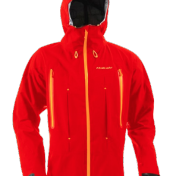
Snowproof jacket
A good snow, rain and windproof jacket
Quantity: 1 -

T-shirt
Synthetic fibre long or short sleeve t-shirt
Quantity: 3 or 4 long sleeve t-shirts -

Fleece jacket
Used alone or as part of a layer system for better performance
Quantity: 1
Legs
-
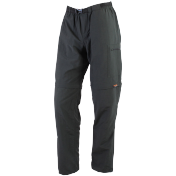
Trekking pants
Light trekking pants
Quantity: 2 or 3 pairs -

Gaiters
For snow, sand or scree terrain
Quantity: 1 pair -
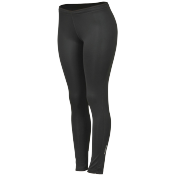
Base layer pants
For very cold days and summit push
Quantity: 1 or 2 -

Snowproof pants
Goretex or similar pants will be used for high wind or during snow conditions
Quantity: 1 -

Fleece Pants
Fleece, polartec or similar. To be used with other layers for very cold conditions
Quantity: 1
Hands
-
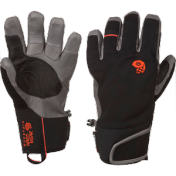
Waterproof gloves
A pair of good waterproof gloves for ice climbing with padded knuckles
Quantity: OPTIONAL -

Hand warmers
Chemical hand warmers for the summit push.
Quantity: 4 packs -

Mittens
Thick down mittens for summit push
Quantity: 1 pair -

Gloves
Fleece or polartec gloves for every day use
Quantity: 1 pair
Feet
-

Sandals or crocs
Sandals or crocs for river crossing or hanging around camp
Quantity: 1 pair -

Trekking boots
Waterproof trekking boots, try wearing them before the expedition
Quantity: 1 pair -

Trekking socks
Good thick trekking socks
Quantity: 4 or 5 pairs -

Thick expedition socks
For summit day
Quantity: 1 pair -
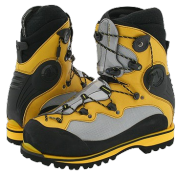
Double boots
A pair of double or double plastic boots such as Koflach Exped, Koflach Vertical, Asolo Ottomilla, Asolo AFS, Trezetta, Scarpa Vega, Scarpa Inferno, La Sportiva Baruntse, Olympus Mons, La Sportiva Spantik, Scarpa Phantom, La Sportiva G2.
Single layer boots such as La Sportiva Nepal XT, EVO, Batura or Boreal Latok, ARE NOT SUITABLE.
Quantity: 1 pair
Technical equipment
-
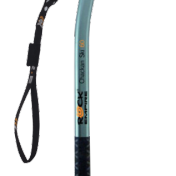
Ice axe
A traverse ice axe (piolet). Can be a straight tool or slightly curved.
Quantity: 1 -

Crampons
Crampons with antibott system
Quantity: 1 pair
Other Equipment
-

Inflatable matress
An inflatable mattress and its repair kit
Quantity: OPTIONAL -

Carbo gels
These gels help out on recovery
Quantity: 5 -

Snacks
Salty snacks, sweets, etc. Any sort of tasty ready food as complement. On high altitude mountains we don’t normally worry about vitamins and proteins as these kinds of food are too hard to digest. You can buy all these in a local market.
Quantity: 3kg for (2 for Aconcagua and 1 for Ojos) -

Stuff sacks or bin bags
Helps to keep your stuff dry and organised
Quantity: 2 -

Sleeping Bag
A good down sleeping
Quantity: -15C (Comfort temperature) -

Rucksack
A decent rucksack with hip belt and rain cover
Quantity: At least 55 litres -

Altitude medicine
Our guides already have pretty much any drugs you might need during any trip. However, it would be great if you could have a spare tab of the most used drugs:
Ibuprofen (Advil)– This is an anti-inflammatory and works great for high altitude head aches
Quantity: kit
Loperamide (Imodium) – controls diarrea (not to be used in case of digestive infections. Ask our guides) -

Personal Hygiene kit
Soap, tooth brus, come, etc
Quantity: kit -

Sleeping mattress
We prefer taking 2 foam sleeping mattress because of sharp rocks. If you have an inflatable mattress you should also bring a foam mattress to protect the inflatable one against sharp rocks. Don’t forget bringing a repair kit if you have an inflatable mattress.
Quantity: 2 -

1 litre thermos
Metallic good quality 1 litre thermos for the summit push. You must have one. Please do not bring smaller ones.
Quantity: 1 -

Water bottle
Nalgene 1 litre bottles or similar are great for expeditions! We prefer to not use camelbacks as its hose pipe might freeze
Quantity: 2 x 1 litre -

Duffel Bag
Used to transport or store your equipment. In many cases, we transport your personal gear on animals and we don’t want your equipment to get wet or have mule smell…
Quantity: 1 -

Freeze dried food
Freeze dried or dry food for high camp
Quantity: 5 packs -
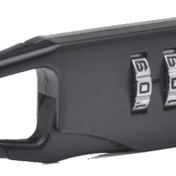
Padlock
To lock your duffel during transportation
Quantity: 1 -

Trekking poles
Gives you more stability during walk and summit push.
Quantity: 1 or pair
FAQ
How much equipment will I have to carry? Can I make it?
In Aconcagua your backpack will never weigh more than 12-15 kg. We prepared our itinerary in a way so your equipment is split in 2 loads to be taken up in 2 different days. This way you don’t have to carry so much weight.
Do I have to carry tents and stoves?
All group equipment is purchased, carried, cleaned and assembled by our guides and porters, you don’t have to worry about it.
I still think 12 kg is too much. Can I hire a porter to carry my equipment?
You can’t hire one for Ojos. But you can hire one for Aconcagua. If you feel you will not be able to carry your equipment, you can easily hire a porter at Plaza de Mulas. This must be done in advance.
How much does a porter charge?
Aconcagua porters are unionized and are certainly the most expensive porters in the world! For a 20kg load they charge:
Plaza de Mulas (BC) > Canada (C1) = U$D140
Plaza de Mulas (BC) > Nido de Condores (C2) = U$D190
Plaza de Mulas (BC) > Colera (C3) = U$D360
Colera (C3) > Plaza de Mulas (BC) = U$D280
Canada (C1) > Nido de Condores (C2) = U$D190
Nido de Condores (C2) > Colera (C3)= U$D280
Complete Porter Service (to carry up to 20kgs) PM- Canada- Nido de Condores- Colera- Return to PM U$D890.
Is there communication on the mountain?
Yes! our guides carry sat phones at all times and you can easily make emergencies phone calls for U$3/minute. Recently a mobile phone antenna has been installed at Aconcagua BC. Its power however is a little unreliable (generator and solar power) and one shouldn’t fully rely on this type of communication. Our guides carry VHF radios and can communicate between camps at any time. There is no mobile phone signal at Ojos del Salado.
Would you guys call my family and tell them I’m alright?
Of course! Even better! We have a blog that is updated every day! We normally post messages or photos about the expedition progress. Please visit our Facebook page and check the latest posts.
Do I have to share tents to anyone?
Yes. All tents are shared by every 2 persons and this is previously agreed.
I heard Aconcagua is an easy trek, is that true?
In fact anyone can get to the summit of Aconcagua without climbing anything technical. There are no technical steps on the normal route of Aconcagua. We are however talking about a 7000 metre peak and anything can happen. Several unprepared climbers lost their lives due to relatively simple mistakes. Please read all information before attempting any high altitude mountain.
Do I have to rock climb to get to the top of Ojos del Salado?
Not really. There is a small rock section just below the summit. Its actually an easy scramble and nothing to worry about.
Can I charge my telephone or camera?
Yes! At Aconcagua basecamp we have solar panels to charge batteries, iPods, etc. Of course this changes when there’s no enough sunlight. We also take smaller solar panels to Ojos del Salado and can charge USB appliances such as phones.
What if I abandon or quit the expedition?
If you quit the expedition 1 week before departure, it is possible to recover part of your investment. Contact us and find out more.
If you quit the expedition in Mendoza (or Copiapo), you can continue enjoying the services we provide you such as transportation and hotel. However we can not pay back the money you invested because logistics will already be hired.
If you quit the expedition after we left Mendoza (or Copiapo), you will have to cover individual transportation and accommodation costs. Everyone who leaves the expedition for personal or health reasons, should pay these costs.
If you give up during the summit attempt, you will never have to go down alone. Usually we coordinate your descent with more expedition members or also with guides from other known expeditions. One of the guides will always be with you. This is a common practice in mountains like Aconcagua.
For example, if you decide to abandon the expedition at camp 2 5650m high, you might have a U$550 ~ U$750 expense to get back to the nearest town.
What if I’m too tired after Aconcagua and I quit Ojos del Salado, can I have my money back?
In this case, the only way to have part of your payment back is that if you tell us about not going to Ojos del Salado before we go to Mendoza. The reason is that by the time we are in Mendoza, we’ll have most of out logistics at Ojos already paid for.
Will my acclimatisation fade out if I spend a few days in low altitudes?
Not at all, You’d only have to worry about it after 5 or 6 days in a row. Acclimatisation actually stays in your body for up to 2 weeks.
What’s your philosophy?
We accept women and men of any age, experience or ambition. We ask our members to be patient, respect the leader’s decisions and never go up or down alone.
Remember that you don’t pay us to take you to the summit, you pay mountaineering professionals with several years experience to help you up and down a steep mountain in the safest possible way.
Our itinerary may seem slower than other companies, this is due to a longer acclimatisation plan based on safety. More days will actually improve the chance of reaching the summit!
How much money should I take?
You might have to spend money on dinner and lunch in Mendoza and Copiapo, equipment rentals, telephone bills, internet, showers, porters, tips, etc. You might also have extra expenses in case you decide to abandon the mountain. We recommend you to bring a total of $2500 in US currency for the whole trip. Please check the expenditure list:
Climbing permit (non latin americans): U$800
Dinner and lunch in Mendoza (average): U$100
Dinner and lunch in Copiapo (average): U$100
Equipment rentals for Aconcagua (average): U$450
Equipment rentals for Ojos del Salado (average): U$200
Cost of abandoning trip: U$550 Helicopter costs: U$1400 – USD2100
Average porter expenditure (if any): U$220
Can I use credit cards in Argentina or Chile?
We do not recommend you using credit cards in Argentina. In addition to the up to 25% tax, it is quite possible that your credit card might not work due to poor communication system. Only major hotels and supermarkets might accept foreign credit cards. The financial situation in Argentina is very unstable so we highly recommend you to bring US dollars. Chile is more friendly with credit cards and accepts them in most places.
What sort of training do I need for big mountains like this ones?
For high 6000 metre peaks, we recommend you start training at least three months before, depending on your physical condition. Aerobic exercises like running and cycling are very useful. Ideally ask a professional to recommend you a good aerobic training program. A very effective exercise is to go hiking with a rucksack on lower mountains. BEWARE of injuries! We have had some cases of clients who have trained too much and ended up hurting themselves.
What experience do I need for this trip?
Ideally anyone attempting Aconcagua or Ojos should have climbed at least one 6000 metre peak before, in order to become familiarised with acclimatisation and snow walking.
What if I have a special diet?
Please tell us in advance about any food issues you might have and also please remind our guides about it too. Unless you bring your own food, we cannot help you if you are macrobiotic, vegan or celiac due to extreme logistical difficulties. Contact us and let us know about your food restriction.
Who will cook in this trip?
We have 4 very skillful cooks at Aconcagua BC and 2 at Confluencia (approach camp). As for the altitude camps, our guides will cook for you.We’ll take a cook to Ojos as well. We guarantee you will e impressed about the meals!
Why do I have to bring freeze dried food?
We recommend our customers to bring 2 or 3 packs of freeze dried meals to Aconcagua’s camp 3. We have tried to serve a standard menu at camp 3 for several years but it never worked. One of the symptoms high altitude produces on the human body is the lack of appetite. Therefore people become very ‘picky’ on extreme altitudes so we prefer everyone brings their own meal.
Is there water during the approach?
Yes, we will provide you with fresh water in all camps.
What if I have a health problem?
Our leaders have extensive experience in mountain medicine and can solve most of the problems you might encounter. in addition, we have doctor at Aconcagua BC and Confluencia.
What if I need a rescue?
Helicopter rescues can be performed at Confluencia, Plaza de Mulas and Nido de Condores (depending upon weather conditions). All helicopter rescues authorized by Aconcagua basecamp doctors are free. Ojos del Salado has no doctors, but there are rescue vehicles at Maricunga (by Chilean customs and immigration)
Do I have to clear customs in Chile before climbing Ojos del Salado?
You don’t. You’ll be legally in Chile while climbing Ojos del Salado. And because you’ll still be in Chile you don’t have to clear customs. All you have to do is to show your ID and register your name at Chilean police
Do you recommend the use of Diamox?
NOT for the Central and Dry Andes. In extreme altitudes like the Himalayas or Karakorum we do recommend using Acetazolamide or Diamox. This drug seems to actually work during the acclimatisation period by increasing the breathing rate at night (reduces CO2 levels), and also is a diuretic which eliminates sodium out of your system. In the Andes mountains, however, mountains are too dry and taking diuretics such as Diamox actually decrease your acclimatisation capacity.
I was climbing in Peru before and I had a hard time communicating to my guide. Do your guides speak any English?
Yes, our leaders speak fluent English. Please check our team’s information and find out about our guides’ communication skills.
What percentage of your clients actually make it to the summit?
It depends upon weather, experiences, fitness and their nationality. But usually, about 75% of our European and North American clients get to the top.
Where do we go to the toilet on the mountain?
There are toilets in Plaza de Mulas and Confluencia. Anything above that we have a toilet tent and everyone has to do their business in a plastic bag. We then stash it and bring it down the mountain.
What if I want to rent equipment?
It is very easy to rent equipment in Mendoza. Check out the list of equipment needed before buying anything. However, if this is the case, we recommend you to arrive at least a day before the arrival date so you have enough time to rent whatever you need. Rentals can be paid in dollars or pesos.
| OJOS 10 days |
ACONCAGUA 20 days |
|
| Goretex jacket | U$57.00 | U$67.00 |
| Trekking poles (pair) | U$27.00 | U$30.00 |
| Double plastic boots | U$98.00 | U$115.00 |
| Hiking boots | U$47.00 | U$55.00 |
| Duffel bag | U$30.00 | U$30.00 |
| Fleece Jacket | U$27.00 | U$30.00 |
| Down Jacket | U$82.00 | U$97.00 |
| Mattress | U$21.00 | U$24.00 |
| Crampons | U$41.00 | U$49.00 |
| Gloves polartec | U$12.00 | U$15.00 |
| Mountain sunglasses | U$30.00 | U$30.00 |
| Mitens | U$36.00 | U$42.00 |
| Rucksack | U$47.00 | U$55.00 |
| Pants polartec | U$27.00 | U$30.00 |
| Pants goretex | U$47.00 | U$55.00 |
| Piolet/Ice axe | U$41.00 | U$49.00 |
| Gaiters | U$21.00 | U$24.00 |
| Down Sleeping bag -15C | U$68.00 | U$127.00 |
Please note there are no equipment rental shops in Copiapo or Santiago. We’ll have to rent all climbing equipment in Mendoza and take it to Ojos del Salado. Our guides are from Mendoza and they will return it.
What’s the temperature my sleeping bag should be good for?
We recommend you to bring good down sleeping bags with comfort temperature of -15 up to -22. Please note there are 2 types of temperatures shown in most of the sleeping bags. We’re focusing on the “comfort temperature”.
Do I need an entry visa to go to Argentina or Chile?
Depending on which country you come from you might have to pay a reciprocity fee. Currently, Americans and Australians doesnt have to pay any longer (Argentina). And from JAN, 2018 Canadians either (Argentina). This should be paid at the airport in cash. Chile has no restrictions for these countries but it can change. Check these links for more information about which countries are required to have visas for Argentina or Chile.
How do I get from Mendoza to Copiapo?
The best way to get from Mendoza to Copiapo is through Sky Airlines (https://www.skyairline.com). It usually costs around U$180 but it might change specially if you get it last minute. This is why we didn’t include this flight.
What are the huts like at Ojos?
The huts are abandoned and maintained by commercial expeditions and mountaineers who frequently climb any of the 38 x 6000m peaks in the surrounding area. Laguna Santa Rosa Hut is the only one regularly maintained.
Laguna Verde Hut is very basic. We normally don’t use its 6 mattresses inside and we only use it for cooking and go to the warm pool inside.
Claudio Lucero is huge! It has 16 mattresses and 2 floors. It doesn’t have any regular maintenance but is usually fairly clean.
Atacama Hut has 4 mattresses and is basically a wooden container size hut with a small kitchen. We usually cook inside and camp outside. There are very good tent platforms there.
Tejos is the more ‘sophisticated’ one. It’s an L-shape conglomerate of 2 standard containers brought in by a mining company in the early 90’s. It has a kitchen, shelves, and beds. Fits 9 people sleeping comfortably on mattresses.
If there are more teams climbing Ojos, we usually use the ‘first to arrive first to use’ but we are generous specially when other teams don’t have tents or someone is sick.
Can I rent equipment in Copiapo or Santiago?
No, you can’t. However, we can rent it for you in Mendoza and bring it to you in Copiapo.
Is there electricity in the huts at Ojos?
The mountain huts we’ll use are very basic. Most of them were abandoned over 20 years ago and the only maintenance is done by mountaineers. There are no power plugs or any kind of services in these huts. There are however mattresses and some furniture that make our stay easier.
I can exchange money in Copiapo?
Yes. There are exchange offices that buy US dollars, sterling and euro in Copiapo. Best rates are in US dollars.
Is there water at Ojos del Salado?
There is no liquid water in Ojos del Salado. Eventually, some snow might melt and start running a little stream. These are however temporary and we cannot count on it. We take all the water from Copiapo. In our last expedition, we took 320 litres of water for each whole expedition.
Where do we go to the toilet at Ojos?
Ojos del Salado is not a controlled mountain. However, we take care of it! There are designated toilets near each hut. Anywhere where there aren’t designated toilets, we make our ‘business’ in bin bags and take them back to Copiapo.

View our photos of Maximo Kausch:
Related links about Maximo Kausch:
- Guinness World Records: Most 6000-m Andes mountains climbed
- Rock and Ice: Kausch Breaks Record for 6000m Peaks Climbed in Andes
- Mount Everest Foundation: Nameless Peaks of the Andes – Suzie Imber and Maximo Kausch
- National Geographic: Mountain cartographer
- Explorers Web: Maximo Kausch going for all 6000ers in the Andes
- The BMC: BMC member’s quest to climb all Andean 6,000m peaks
- Climbing Porn: Maximo Kausch builds “sofa” bouldering route at home
- American Alpine Journal: Mt. Parofes and Other Volcano Ascents
- Adventure Blog: Argentinian Climber Attempting All 6000 Meter Peaks In South America
- Leicester University: Discovery-led learning: Academic follows passion for adventure with aid from supercomputer
- Leicester University: University of Leicester mountain climber scales new heights to advance science
- Leicester University: Lecturer treks the unknown mountains of South America
- 8a.nu: Maximo Kausch beats the world record of 6000 summits in Andes
- BBC: Mountaineer wants to complete climbing marathon of the 117 highest peaks of the Andes
- BBC: Images of a mountain marathon while attempting a world record
- 4sports.ua: МАКСИМО КАУЧ ОТКРЫВАЕТ НОВЫЙ ШЕСТИТЫСЯЧНИК В БОЛИВИИ И СТАНОВИТСЯ ПЕРВЫМ В МИРЕ КТО ПОКОРИЛ 59 ШЕСТИТЫСЯЧНИКОВ
- Revista Vertical: ANDES 6000+ The unfinished list
- Reforma: The king of the 6000ers
- TARINGA!: A mountain marathon at the highest peaks of the Andes
- Desnivel: Maximo Kausch is halfway on his Andean project and ‘finds’ a new 6000er
Maximo Kausch
Founder and expedition leaderMaximo is sponsored by the following brands:
Language skills:
| English - native speaker |
| Spanish - native speaker |
| Portuguese - native speaker |
Maximo Kausch is one of the most accomplished climbers in the world. He is the current world record holder on number of 6000 metre peaks having reached the summit of 89 x 6000 metre peaks and climbed over 100 more extreme altitude worldwide. As expedition leader, Maximo has led several expeditions all over the world. He has climbed many 8000 metre peaks, including Mount K2 in Pakistan.
He was born in Argentina, raised in Brazil and lived over 10 years in the UK. Max is a full-time climber and guide. He literally spends most of his time in the mountains, mainly at the Andes and Himalaya. During his expeditions, Maximo has climbed some of the most remote mountains in the planet and visited at least 30 countries.
Max is a very calm person and focuses on safety and good acclimatisation plans during his expeditions. He is a trained rescuer and has extensive knowledge in high altitude medicine and medical emergencies. On his spare time, Maximo likes rock and mixed climbing in remote mountains.
In 2012 he started an unprecedented project alone and climbed 30 mountains over 6000 meters all alone. His project in now recognised as one of the main exploring projects in the Andes. Max wants to climb all 6000 metres peaks in the Andes by 2019, a total of 104. He has been to at least 11 x 8000-metre expedition at the Himalayas and has plenty extreme logistic experience. Over the years he has helped hundreds of clients to reach the summit of various mountains.
Awards
World Record: Maximo has recently become the record holder of the most number of 6000 metre peaks. He has been to at least 170 high altitude mountains over his 19 years of climbing experience.
More about Maximo Kausch
World Record on 6000 metre peaks

View our photos of Eduardo Tonetti:
Related links about Eduardo Tonetti:
- From the office to the Andes: The story of the mountain guide Edu Tonetti: From the office to the Andes: The story of the mountain guide Edu Tonetti
Eduardo Tonetti
Mountain Guide and Trekking GuideLanguage skills:
| Portuguese - native speaker |
| Spanish - near native speaker |
| English - good command |
Eduardo Tonetti was born in São Paulo - Brazil and was in the advertising business for 15 years. In 2010 he decided to quit his career and guide for living. After 4 years of studies, Edu has graduated at EPGAMT Guiding School in Mendoza. He is now a professional mountain guide and a WFR trained rescuer, licensed to guide in Aconcagua among many other Andean peaks.
Edu has been a rock climber for 13 years and has extensive experience in several rock climbing areas. He specialized in high altitude mountaineering and climbed dozens of mountains in the region. Edu has climbed big mountains like Aconcagua (6962m, 11 times), Ojos del Salado (6898m), Tres Cruces Sur (6738m), Tres Cruces Central (6640m), Mercedario (6770M), Tupungato (6556m), Cerro Plata (5943m), Vicuñas (6087m), among others.
Eduardo has worked with human development and coaching in São Paulo, Brazil and he is now using mountaineering as coaching activities having amazing results!
He has been working in Aconcagua for the last 4 years in a row and started as a porter in 2012. He worked his way up and has now led several expeditions at Central and dry Andes.
Map
Cost
Expedition cost is U$ 7700, contact us to know payment methods:
What’s included:
- An Andes-Specialists english speaking leader;
- 1 or 2 assistant mountain guides (EPGAMT/AAGM certification) depending upon number or clients (client per guide ratio = 2/3);
- Help on purchasing and equipment rental in Mendoza;
- Collect and return of rentals in Mendoza (if necessary);
- Transport from/to Mendoza airport;
- Transport from/to Copiapo airport;
- 5 days of full pension at Plaza de Mulas (breakfast, lunch, dinner, tents, dinning tent, mattresses, etc);
- 2 days of full pension at Confluencia (breakfast, lunch, dinner, tents, dinning tent, mattresses, etc);
- 2 nights in a 4 star hotel with breakfast included in Mendoza – rooms are shared by every 2 clients;
- 2 nights in a 3 star hotel in Copiapo – rooms are shared by every 2 clients;
- Transport from/to Penitentes;
- 4Wd private transport at Ojos del Salado;
- 1 night in a 3 star hotel at Penitentes;
- Lunch at Puente del Inca;
- Transport from/to Horcones;
- Mule transport of a 20kg load to/from basecamp;
- Transport/assembly of tents, pots, gas, food, water in all camps at Aconcagua and Ojos del Salado;
- Use of all mountain huts at Ojos del Salado;
- Steak dinner at Uspallata;
- Usage of dining dome tent, toilets tents, personal tents, mountain tents, medical oxygen, gamow bag and medical kit in all camps;
- Breakfast, lunch, dinner, packed lunch, treated water in the whole Aconcagua;
- All meals outside Copiapo;
- Gas stoves and pots and cups in all camps;
- We even include Malbec wine for dinner at Confluencia and Plaza de Mulas;
- Bureaucratic permissions for Ojos del Salado (if necessary).
What is NOT included:
- Climbing permit for Aconcagua (it varies according to the time of the year and your nationality, check FAQ);
- Flights from/to Mendoza;
- Flights from to Copiapo (usually around U$180). Try this airline;
- Personal climbing equipment (check equipment tab);
- Money return in case you abandon the expedition;
- International travel insurance;
- Any costs caused by excess luggage (over 20kg);
- Porters for you personal equipment;
- Lunch and dinner in Mendoza or Copiapo;
- Reimbursement for loss or damage of your personal equipment.
